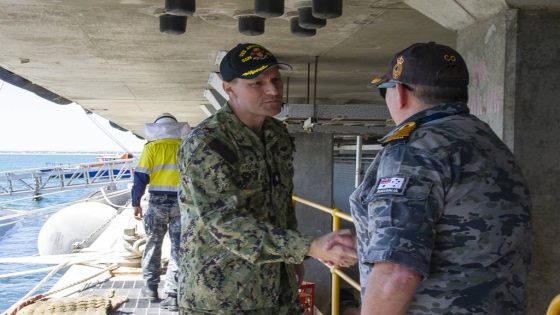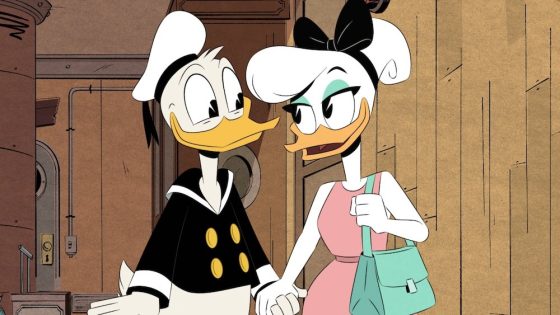NATIONAL HARBOR, Md. â The new attack submarine design the United Kingdom and Australia will share through the AUKUS trilateral arrangement is in a âmatureâ state and will be finalized in the next year or two, leaders said this month.
The third phase of the AUKUS submarine deal centers around Australia and the U.K designing, building and operating their own SSN-AUKUS attack subs, which will leverage American technology.
Though the U.K. wonât accept delivery of its first boat until the late 2030s and Australia not until the early 2040s, design efforts led by the U.K. are ârelatively mature,â according to Vice Adm. Martin Connell, the Second Sea Lord of the U.K. Royal Navy.
Australian representatives from BAE Systems and ASC, formerly called the Australian Submarine Corp. â who will team in a joint venture to build Australiaâs SSN-AUKUS boats â have now joined the British design team, Connell said during a panel discussion at the Navyâs Leagueâs annual Sea Air Space conference April 8.
Discussions with the industry partners now center around âhereâs what we think the future operating environment is going to look like, here are the capabilities that we think weâre going to need, and here is the timeline weâre going to need to deploy it. We need to start building this pretty soon. So thereâs going to be more of that over the next 12 to 24 months as we lock in the final build design,â Connell said.
Dan Packer, the AUKUS director for the Commander of Naval Submarine Forces, told Defense News SSN-AUKUS (also called SSN-A) is described as a U.K.-designed boat with U.S. technology, but âwe are still arm-wrestling over what U.S. technology that means.â
Broadly, he explained during an April 4 embark on Virginia-class attack submarine Delaware, SSN-A will have the American nuclear reactor plant and the accompanying American turbine generators â but the parties are now considering whether the boat will have to use the corresponding American turbine generator lube oil, for example.
Packer said the SSN-A would use the American combat system, a version of which Australia already uses on its Collins-class conventionally powered submarines. But there are ongoing discussions over whether the boat would use just the American torpedo Australia also buys, or whether it could also launch a separate British torpedo.
âRight now, we are in a game of trying to put metrics to which system is betterâ as the three nations look to create a best-of-breed submarine design. âEverybody wins in the end in this kind of competition.â
Australia today operates a fleet of conventionally powered Collins-class submarines. The U.K. is still building its Astute-class nuclear-powered attack sub and previously planned to transition into building an SSN-R next-generation attack sub design. It will now instead transition to the SSN-AUKUS design to match Australia.
Along with the U.S., which is building the Virginia-class nuclear-powered submarine today and plans to transition to a next-generation SSN(X) in the early 2040s, all three nations will see a tech upgrade in that decade.
Connell said during the panel discussion the previous SSN-R would have involved some technology transfer from the United States, but AUKUS allows for that to happen at a greater scale.
âIâve seen the two previous [British submarine] designs, and SSN-AUKUS will be a much better submarine as a result,â Connell said.
Pat Conroy, Australiaâs minister for defense industry, added during the panel discussion the SSN-AUKUS design approach reduces risk for the Royal Australian Navy as it learns to operate its first native-built nuclear-powered submarine.
âAt some stage, the Australian Navy will be operating three classes of submarines,â he said, referring to its Collins class, the three or so Virginia boats it will buy from the U.S. Navy, and its SSN-AUKUS boats. âBut having a common combat system, having a common torpedo system will help de-risk it, as well as allow greater industrial collaboration across the three countries.â
Megan Eckstein is the naval warfare reporter at Defense News. She has covered military news since 2009, with a focus on U.S. Navy and Marine Corps operations, acquisition programs and budgets. She has reported from four geographic fleets and is happiest when sheâs filing stories from a ship. Megan is a University of Maryland alumna.
Source Agencies



